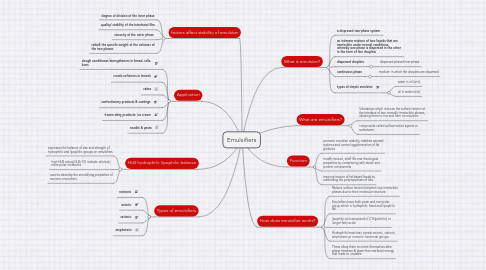Emulsifiers
by Nurul Ajla


1. factors affect stability of emulsion
1.1. degree of division of the inner phase
1.2. quality/ stability of the interfacial film
1.3. viscosity of the outer phase
1.4. ratio& the specific weight of the volumes of the two phases
2. Types of emulsifiers
2.1. nonionic
2.2. anionic
2.3. cationic
2.4. amphoteric
3. HLB-hydrophilic lipophilic balance
3.1. expresses the balance of size and strength of hydrophilic and lipophilic groups on emulsifiers
3.2. high HLB values(HLB>10) indicate relatively more polar molecules
3.3. used to describe the emulsifying properties of nonionic emulsifiers
4. Application
4.1. dough conditioner/strengtheners in bread, rolls, buns
4.2. crumb softeners in breads
4.3. cakes
4.4. confectionary products & coatings
4.5. frozen dairy products- ice cream
4.6. noodle & pasta
5. What is emulsion?
5.1. a dispresed two-phase system
5.2. an intimate mixture of two liquids that are immiscible under normal conditions, whereby one phase is dispersed in the other in the form of fine droplets
5.3. dispersed droplets
5.3.1. dispersed phase/inner phase
5.4. continuous phase
5.4.1. medium in which the droplets are dispersed
5.5. types of simple emulsion
5.5.1. water in oil (w/o)
5.5.2. oil in water (o/w)
